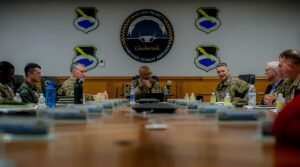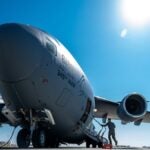
U.S. Air Force Chief of Staff Gen. Charles Q. Brown suggested on June 7 that the Air Force's fiscal 2024 request for multi-year procurements (MYPs) for the Lockheed Martin [LMT] AGM-158 Joint Air-to-Surface Standoff Missile (JASSM) and Long Range Anti-Ship Missile (LRASM) and the Raytheon Technologies' [RTX] AIM-120 Advanced Medium Range Air-to-Air Missile (AMRAAM) will lead to future MYPs for other munitions. The Air Force fiscal 2024 request for JASSM, LRASM, and AMRAAM MYPs "is just a start," Brown told…














